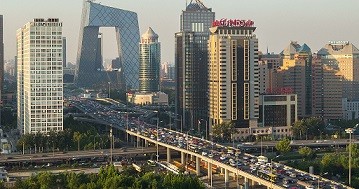The urban expansion of 14 major cities of China, which include Shanghai, Beijing and Guangzhou, will soon be limited by the end of the year, according to an urban planning official, the Global Times reported.
Zhang Xiaoling, assistant to the president of the Land Survey and Planning Institute under the Ministry of Land and Resources, told the Nandung Daily that the said plan to set a boundary for urban development will be compulsory.
According to Dong Zuoji, director of the ministry's land planning department, after the major cities, the plan would be implemented next to over 600 cities across China.
Zhang said that for emerging cities, the boundaries will change over time, but the limits on large cities will be imposed strictly. Many cities are currently expanding at a rapid rate by building large public spaces and creating new districts, the report said.
Zhang added that factors such as land use plan, construction scale and expansion scale will be taken into consideration when setting the boundaries.
The report said that the aim of the ministry's land planning department is to speed up city development and promote high-quality urbanization to preserve land and protect farmland and the ecosystem.
"Setting a boundary for urban development aims to optimize urban land-use structures and promote their development in a rational way. Such physical boundaries will not hinder regional economic integration, as it depends on industrial coordination and economic complementation between cities," Li Jingguo, a property research fellow at the Chinese Academy of Social Sciences, told the Global Times.
Li said that housing prices may not be affected since authorities would consider factors like population growth, a city's resources and real-estate development trend.
The urban expansion rate reached 64.45 percent from 2000 to 2010, 18.55 percent higher than the urban population growth rate in the same period, the report said.



























